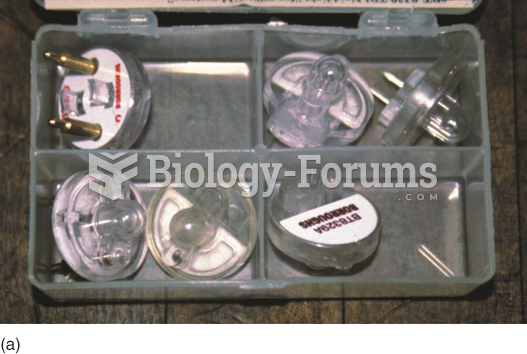|
|
|
People about to have surgery must tell their health care providers about all supplements they take.
According to research, pregnant women tend to eat more if carrying a baby boy. Male fetuses may secrete a chemical that stimulates their mothers to step up her energy intake.
There are more sensory neurons in the tongue than in any other part of the body.
The toxic levels for lithium carbonate are close to the therapeutic levels. Signs of toxicity include fine hand tremor, polyuria, mild thirst, nausea, general discomfort, diarrhea, vomiting, drowsiness, muscular weakness, lack of coordination, ataxia, giddiness, tinnitus, and blurred vision.
Cancer has been around as long as humankind, but only in the second half of the twentieth century did the number of cancer cases explode.







